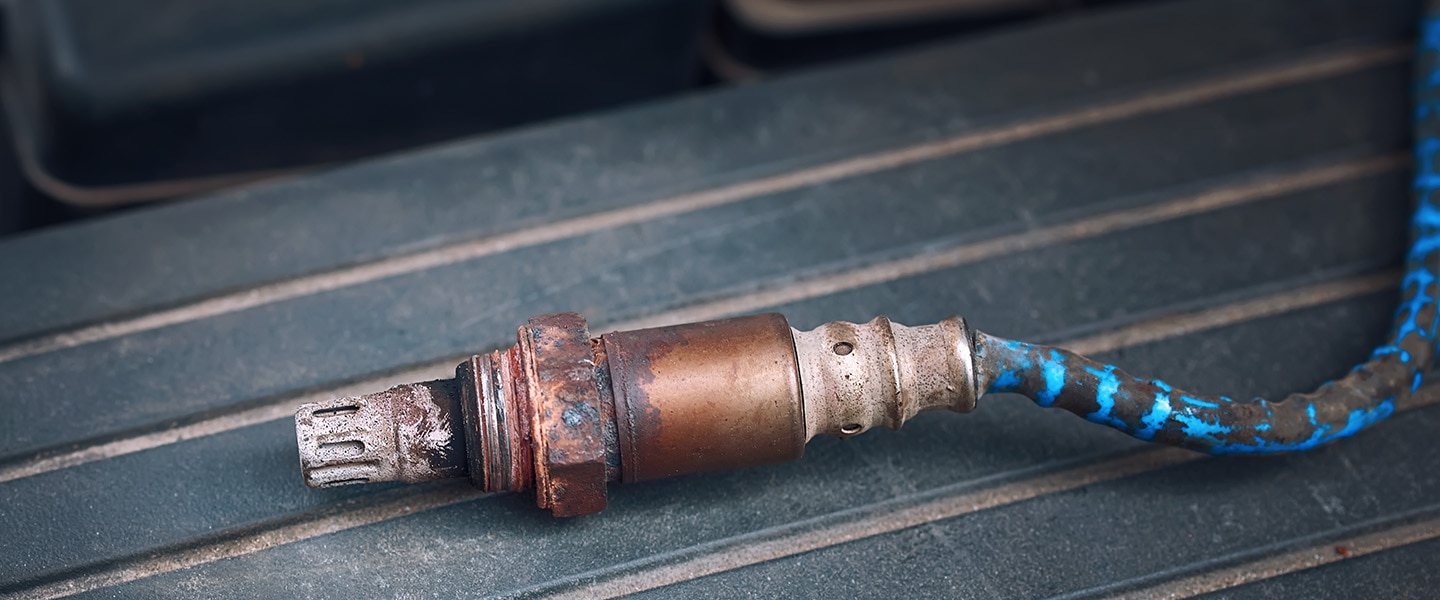When it comes to automotive maintenance, understanding the significance of components like the O2 sensor is crucial. But what exactly is an O2 sensor, and why does it matter? Most importantly, if it fails, how much will it cost to replace? Continue reading to learn the answers to these important questions by exploring the functionality, importance, signs of failure and replacement costs of O2 sensors in vehicles.

How Much Does an Oxygen (O2) Sensor Replacement Cost?
What Is an Oxygen (O2) Sensor?
The O2 or oxygen sensor plays a critical role in a vehicle's emissions system. Its primary function is to measure the level of unburned oxygen in the exhaust gases and transmit this data to the electronic control unit (ECU). This information allows the ECU to adjust the air-to-fuel ratio for optimal combustion efficiency.
How it works
Operating at the heart of the ECU, the O2 sensor detects variations in oxygen levels between the exhaust gas and the surrounding air. By generating a voltage proportional to the oxygen content, the sensor provides real-time feedback to the ECU, enabling precise adjustments to the fuel mixture for optimal performance and emissions control.
Types of O2 sensors
Modern vehicles are equipped with various types of O2 sensors, including upstream and downstream variants:
- Upstream sensors: Positioned before the catalytic converter, these sensors assist in fuel trim adjustments, enhancing fuel economy and engine performance.
- Downstream sensors: Located after the catalytic converter, these sensors monitor oxygen levels while evaluating catalytic converter efficiency.
With up to four sensors, depending on the vehicle or engine type, O2 sensors are crucial in maintaining engine efficiency and minimizing harmful emissions. Recognizing signs of O2 sensor failure is essential to addressing issues promptly and avoiding potential damage.
O2 Sensor Replacement Cost
Over time, O2 sensors can fail, triggering the dreaded "check engine" light. Unfortunately, repairing these sensors is impossible because of their intricate technology and delicate materials. Replacement is the only way to restore proper functionality.
The average cost for an O2 sensor replacement is between $362 and $412. This figure includes labor expenses between $63 and $79, while parts range from $300 to $333.
Factors affecting O2 sensor replacement cost
Several variables influence the cost of O2 sensor replacement:
- Make and model: The cost can fluctuate based on your vehicle's make and model.
- Type: Your vehicle may have one or multiple O2 sensors, and costs can differ based on the type and location of these sensors.
- Quality: Original equipment manufacturer (OEM) sensors typically carry a higher price tag compared to aftermarket options.
- Labor costs: The labor expense for sensor replacement depends on the mechanic's hourly rate and the difficulty of the installation process.
- Extensive repairs: If your sensor replacement is part of a more significant exhaust system repair, the overall cost may increase.
Common Symptoms of a Bad O2 Sensor
Recognizing the signs of a failing O2 sensor is crucial for maintaining your vehicle's performance and limiting emissions. Here are some indicators that it may be time to replace your O2 sensor:
- Check engine light
- Poor gas mileage
- Rough idling or hesitation
- Failed emissions testing
- Increased emissions
Monitoring these signs can help you address O2 sensor issues promptly, ensuring optimal engine performance and minimizing environmental impact.
DIY O2 Sensor Replacement vs. Professional Help
Let's explore the pros and cons of both DIY and professional approaches.
| Repair Option | Pros | Cons |
|---|---|---|
| DIY |
|
|
| Professional |
|
|
How To Choose a Reputable O2 Sensor Replacement Provider
When selecting a reputable O2 sensor replacement provider, consider several key factors to ensure quality service:
- Experience: Look for providers with extensive experience in O2 sensor replacement and automotive repair, ensuring issues are diagnosed accurately and replacements are performed effectively.
- Certifications: Choose a provider with certified technicians who have undergone training and possess the necessary skills to perform O2 sensor replacements.
- Warranties: Opt for providers that offer warranties on parts and labor for extra peace of mind against faulty parts or installation errors.
- Customer feedback: Review customer testimonials and look for providers with positive reviews that highlight the quality of service, professionalism and effectiveness of O2 sensor replacements.
- Transparency: Select a provider that is transparent about their pricing, services and procedures.
Synchrony Car Care Credit Card Can Help You Pay for O2 Sensor Replacements
O2 sensors play a vital role in optimizing engine performance and emissions control, and regular maintenance of these components helps ensure that your vehicle operates efficiently. If you detect signs of O2 sensor malfunction, such as decreased fuel efficiency or engine hesitation, consult a mechanic to address the issue and prevent potential damage to your engine.
The Synchrony Car Care credit card can help you pay for car repairs promptly, keeping you on the road and where you need to be. Learn more and apply now.

You may also like
Disclaimer: We include links to other websites in this article for our convenience. We do not endorse any content on these sites. All product names, logos, and brands are property of their respective owners. All company, product and service names used in this website are for identification purposes only. Use of these names, logos, and brands does not imply endorsement. This content is subject to change without notice and offered for informational use only. You are urged to consult with your individual advisors with respect to any information presented. Synchrony and any of its affiliates (collectively, “Synchrony”) make no representations or warranties regarding this content and accept no liability for any loss or harm arising from the use of the information provided. Your receipt of this material constitutes your acceptance of these terms and conditions.
© 2024 Synchrony Bank.